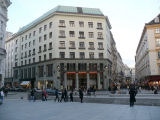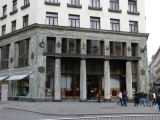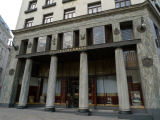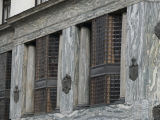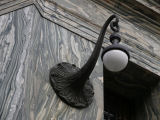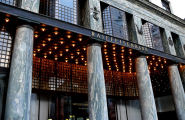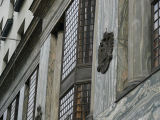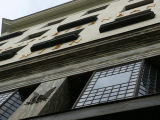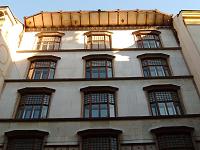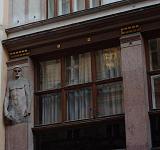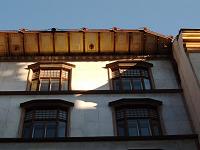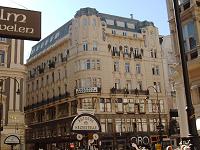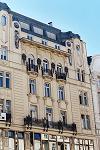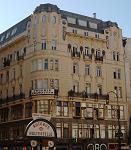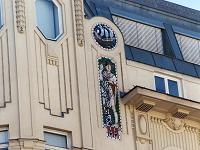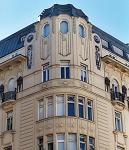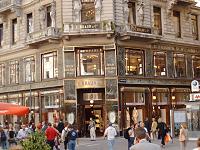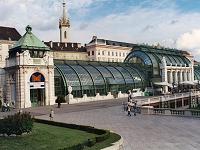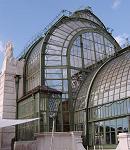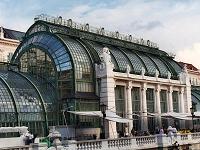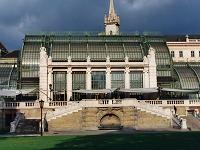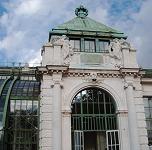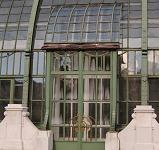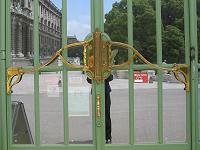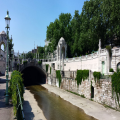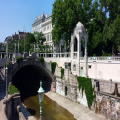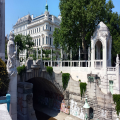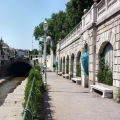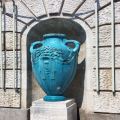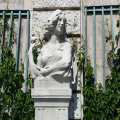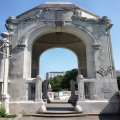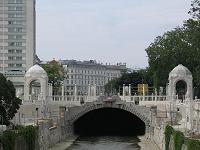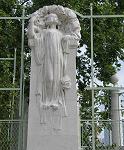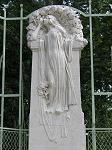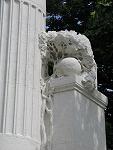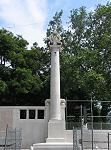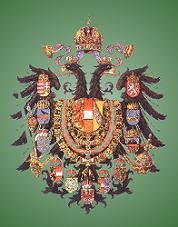The Belle Epoque in Europe
Austria
Vienna: Inner City and Ringstraße
Adolf Loos (1870-1933)
"House without eyebrows" (1910)
Michaelerplatz 3
© Thomas Ledl, Wien
Adolf Loos was a fierce critic of the Secession style and a pioneer of modernity in architecture. In his well-known polemic pamphlet Ornament and Crime (1908), he campaigned against the delight of ornamentation in historism and Art Nouveau. His most famous building is the Goldman & Salatsch house or "Looshaus" at Michaelerplatz, also known as the "house without eyebrows" because of the missing window sills, by which he caused national and international sensation.
Max Fabiani
Artaria Palace (1900-02)
Kohlmarkt 9
Max Fabiani, student of Otto Wagner, designed this building for the printing and publishing house Artaria/Freytag & Berndt which until today has its offices in the basement and ground floor. Most of the two lower floors, the business area, is made of glass and subdivided by four pillars covered of red marble; the residential area above is separated by an iron traverse. The sculptures to the left and to the right were created by Alfons Canciani. The Artaria was the first Vienna house being covered by marble tiles in the "wagnerian style". Very remarkable too is the using of bay windows through which the façade got a vivid look. You find here other "wagnerian" motifs such as the roof looking like a Japanese fan or the small roofs upon each bay window.
Friedrich Ohmann (1858-1927)
Greenhouse Burggarten (Palace's Garden, 1899-1905)
When the architect Friedrich Ohmann supervised the construction of the Neue Hofburg (the new City Palace), the imperial administration gave him the commission to build the Neuer Wintergarten, the new greenhouse, too, which should replace the old Glashaus im Kaisergarten (greenhouse of the imperial garden) built from 1823 to 1826. The look of the greenhouse gives the impression of being rather made by some artist of Parisian or Brussels Art Nouveau than by a Jugendstil artist of Vienna. Between neobaroque pavilions are delicate glass structures, the decoration is partly historical, partly secessionist. Without being an architectural pioneering feat, this building is a jewel of the turn of the century to be find rather seldom in Vienna, well situated between the Hofburg and the Albert Palace (Albertina).
Friedrich Ohmann (1858-1927)
Superstructure across the Wien River (1903-06)
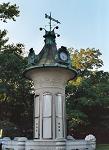
Weather Station in
the Municipal Park
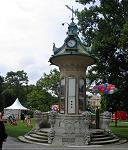
Weather Station in
the Municipal Park
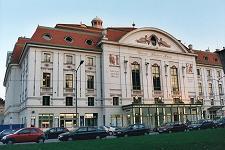
Ludwig Baumann
F. Fellner
H. Helmer
Wiener Konzerthaus
(Concert Hall,
1910-13)
Lothringer Str. 18
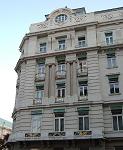
Ludwig Baumann
Chamber of Commerce
and Trade
(1905-07)
Stubenring 8-10

Municipal Park
Administration
